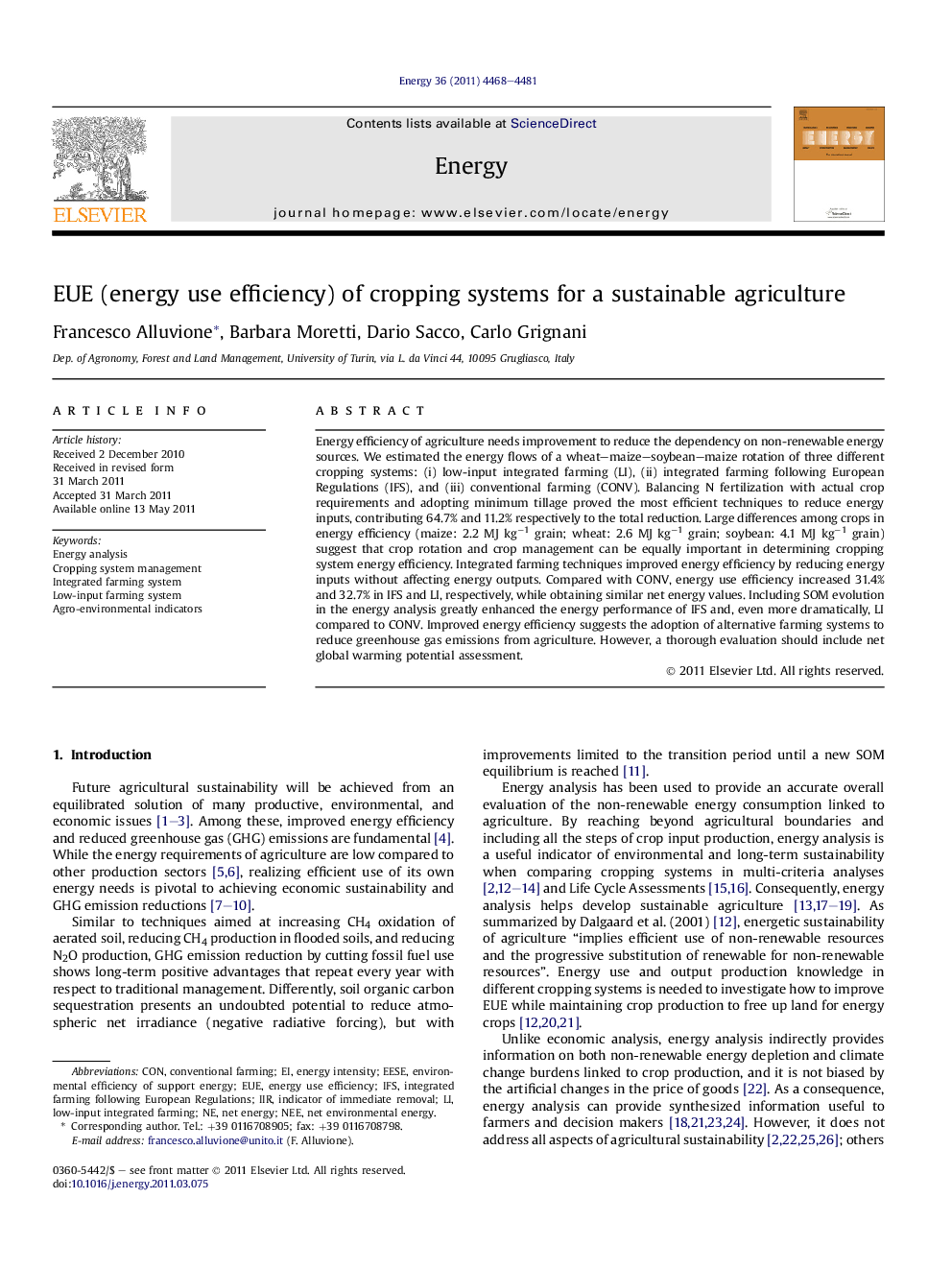| Article ID | Journal | Published Year | Pages | File Type |
|---|---|---|---|---|
| 1734207 | Energy | 2011 | 14 Pages |
Energy efficiency of agriculture needs improvement to reduce the dependency on non-renewable energy sources. We estimated the energy flows of a wheat–maize–soybean–maize rotation of three different cropping systems: (i) low-input integrated farming (LI), (ii) integrated farming following European Regulations (IFS), and (iii) conventional farming (CONV). Balancing N fertilization with actual crop requirements and adopting minimum tillage proved the most efficient techniques to reduce energy inputs, contributing 64.7% and 11.2% respectively to the total reduction. Large differences among crops in energy efficiency (maize: 2.2 MJ kg−1 grain; wheat: 2.6 MJ kg−1 grain; soybean: 4.1 MJ kg−1 grain) suggest that crop rotation and crop management can be equally important in determining cropping system energy efficiency. Integrated farming techniques improved energy efficiency by reducing energy inputs without affecting energy outputs. Compared with CONV, energy use efficiency increased 31.4% and 32.7% in IFS and LI, respectively, while obtaining similar net energy values. Including SOM evolution in the energy analysis greatly enhanced the energy performance of IFS and, even more dramatically, LI compared to CONV. Improved energy efficiency suggests the adoption of alternative farming systems to reduce greenhouse gas emissions from agriculture. However, a thorough evaluation should include net global warming potential assessment.
► We evaluated the energy flows of integrated as alternative to conventional Farming. ► Energy flows, soil organic matter evolution included, were analyzed following process analysis. ► Energy flows were compared using indicators. ► Integrated farming improved energy efficiency without affecting net energy. ► Inclusion of soil organic matter in energy analysis accrue environmental evaluation.
